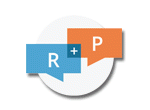Engaging English Learners in the Science and Engineering Practices

- Teachers should know NGSS practices are heavily language-dependent—and teach accordingly to make experiences inclusive for multilingual students.
- District staff and PD providers should learn about local approaches for supporting disciplinary language use with English Learners and help science teachers apply these.
- School leaders should develop teachers' collective expertise to ensure approaches to developing language are coherent across subject matter instruction.
What is the Issue?
Routinely engaging all students in the practices of science and engineering is a crucial fixture of the new vision for K-12 science education. The practices can be seen as a barrier to participation for English Learners (ELs), or they can be viewed as an opportunity to provide rich instruction that builds science-related competencies and identities. Certain elements of the practices and related instructional approaches can be beneficial for students learning science while also learning the language of instruction.
Authors:
KERRI WINGERT AND TIM PODKUL
Reflection Questions
- Consider how science learning supports language development. Does language development also support science learning?
- How can you remove the language barriers to accessing science in your setting? How can you support comprehension by connecting new content to the prior knowledge of students?
- How can you build a community of learners that includes students with varied language skills?
Things to Consider
- School science has a language all its own. Its vocabulary and sentence structure is complex—and aspects of argumentation and reasoning in science are different than in other disciplines. This can be troublesome for language learners if teachers do not make these differences apparent and explicit (e.g., compare and contrast argumentation in science and in other parts of students' lives).
- Students often continue to think in their first languages for years after they begin to learn a second language. Help students build on their first language skills to gain deeper science understanding. For example, students can look up content online using their native language, or keep a bilingual vocabulary journal of new words.
- Practice-linked instruction is a powerful motivator for engaging students. Students should be encouraged to investigate phenomena of interest whenever possible. After a large-group inquiry, the process can be reconstructed in written or verbal language—in developmentally appropriate ways and using scientific language.
- The four language-intensive NGSS practices—Argumentation, Communication, Explanation, and Questioning—can be taught using language practices that are both receptive (listening and reading) and productive (speaking and writing). (See the list on the right.)
Language Practices in STEM Receptive Practices
Listening: Use a poster, slide, or picture to support student listening in science (e.g., the GLAD Pictorial Input Chart).
Reading: Preview science texts with students, discussing salient text features such as tables, graphs, and photographs before they read it. Provide summaries and include native language texts.
Productive Practices
Speaking: Provide sentence stems for all students to use, especially to support complex verbal practices like argumentation, explanation, and communication.
Writing: Engage ELs in authentic vocabulary exploration as they try to make their thoughts meaningful to others through writing. Provide dictionaries or Google Translate. Look beyond grammar and spelling to understand student ideas.
Attending to Equity
- NGSS instruction is largely dependent on language, and it may inadvertently exclude English Learners from full participation if steps aren't taken. Multilingual students have important insights to contribute to learning, and scientific communities greatly benefit from the diversity of thought and experience these students bring.
- Second language learners often have rich family and community practices and histories that can be leveraged to more deeply engage these students in STEM learning. Keep "big ideas" in science grounded in everyday examples that are accessible to all learners.
Recommended Actions You Can Take
- Leverage the strong connections between NGSS and Common Core State Standards in English / Language Arts if it fits your context.
- Supporting classroom science talk is a crucial method of learning and may be especially important for English Learners.
- Read and leverage this NGSS case study, the work of this project, as well as this research on science learning with English Learners.
- Take a free online course on supporting English Learners.
ALSO SEE STEM TEACHING TOOLS
STEM Teaching Tools content copyright 2014-22 UW Institute for Science + Math Education. All rights reserved.
This site is primarily funded by the National Science Foundation (NSF) through Award #1920249 (previously through Awards #1238253 and #1854059). Opinions expressed are not those of any funding agency.
Work is licensed under a Creative Commons Attribution-ShareAlike 4.0 Unported License. Others may adapt with attribution. Funded by the National Science Foundation (NSF). Opinions expressed are not those of any funding agency.


 Email Feedback
Email Feedback


